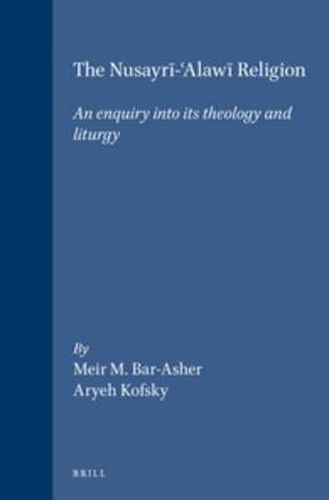Readings Newsletter
Become a Readings Member to make your shopping experience even easier.
Sign in or sign up for free!
You’re not far away from qualifying for FREE standard shipping within Australia
You’ve qualified for FREE standard shipping within Australia
The cart is loading…






The Nusayris - also known as Alawis - have been in power in Syria for the last three decades of the 20th century. Little is known of their origins or their long history, while their religious creeds and thought are somewhat better known. The main reason for our fragmentary knowledge of the Nusayri religion is that, since its beginnings, it has always been the secret faith of a self-conscious elite that zealously guarded its sectarian literature. The Nusayri-Alawis faith is a clear example of a syncretistic religion. It combines and fuses elements of cults and creeds of very disparate, and remote, origins. Among these are various pagan beliefs (residues of ancient Mesopotamian and Syrian cults), as well as Persian, Christian, Gnostic and Muslim - both Sunni and Shi'i - religious precepts and practices. All these components have been brought together in a syncretistic religious system that has assumed a heterodox Shi'i garb. This volume presents a mosaic of fundamental aspects of Nusayri theology and liturgy. It demonstrates the complexity of Nusayri theology and the diversity of religious thought within the Nusayri fold.
$9.00 standard shipping within Australia
FREE standard shipping within Australia for orders over $100.00
Express & International shipping calculated at checkout
The Nusayris - also known as Alawis - have been in power in Syria for the last three decades of the 20th century. Little is known of their origins or their long history, while their religious creeds and thought are somewhat better known. The main reason for our fragmentary knowledge of the Nusayri religion is that, since its beginnings, it has always been the secret faith of a self-conscious elite that zealously guarded its sectarian literature. The Nusayri-Alawis faith is a clear example of a syncretistic religion. It combines and fuses elements of cults and creeds of very disparate, and remote, origins. Among these are various pagan beliefs (residues of ancient Mesopotamian and Syrian cults), as well as Persian, Christian, Gnostic and Muslim - both Sunni and Shi'i - religious precepts and practices. All these components have been brought together in a syncretistic religious system that has assumed a heterodox Shi'i garb. This volume presents a mosaic of fundamental aspects of Nusayri theology and liturgy. It demonstrates the complexity of Nusayri theology and the diversity of religious thought within the Nusayri fold.